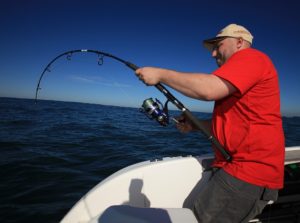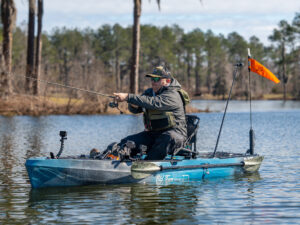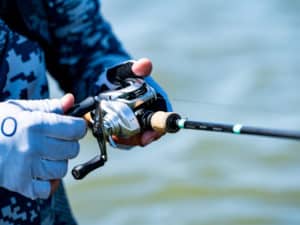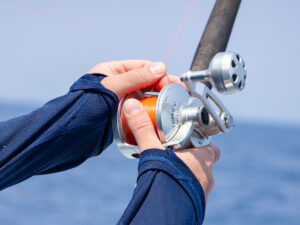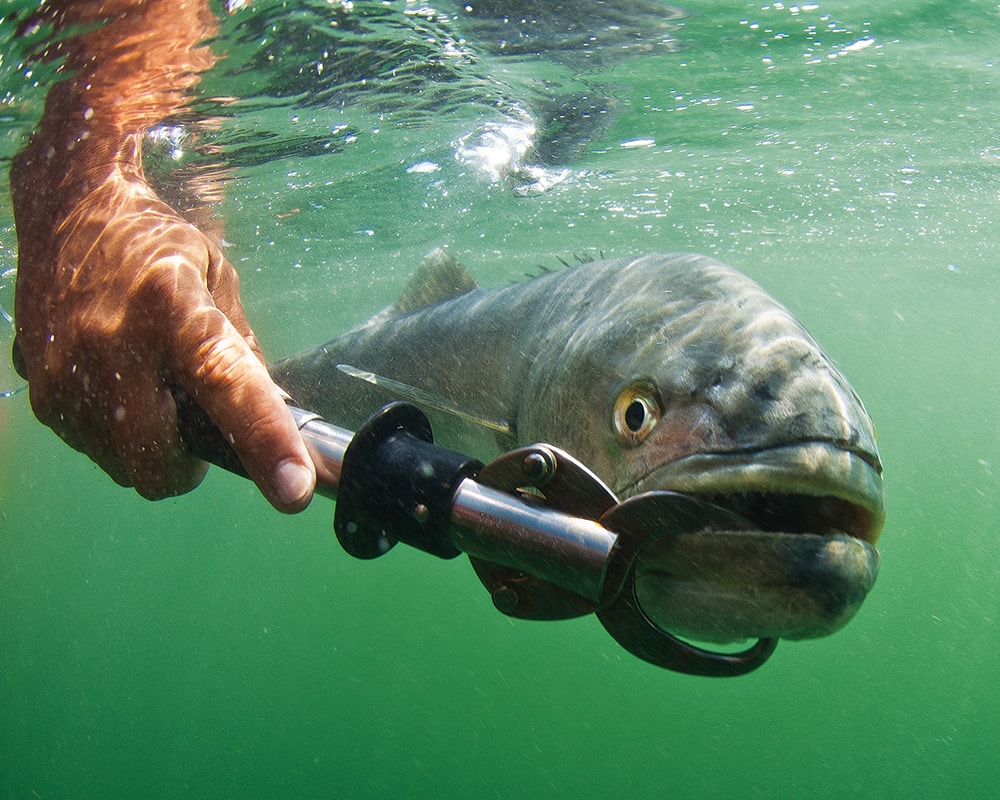
After a long fight, your fish is finally whipped. The leader reaches the tiptop, and now’s the time to land your catch. What’s the best tool for the job? A gaff isn’t really an option unless you’re landing an amberjack, tuna or mackerel for dinner. Instead, a net or lip-gripper device is the better option.
Chances are both tools have a valuable role on your boat.
Grippers are mainly for handling and controlling fish, not necessarily landing them, says Katie Mitchell, communications manager at Bass Pro Shops. A net provides an immediate end to the fight with a quick scoop. Grippers can also make short work of landing and handling fish from a low-profile boat or kayak.
Setting nets aside, lip grippers come in a variety of designs, materials and prices.
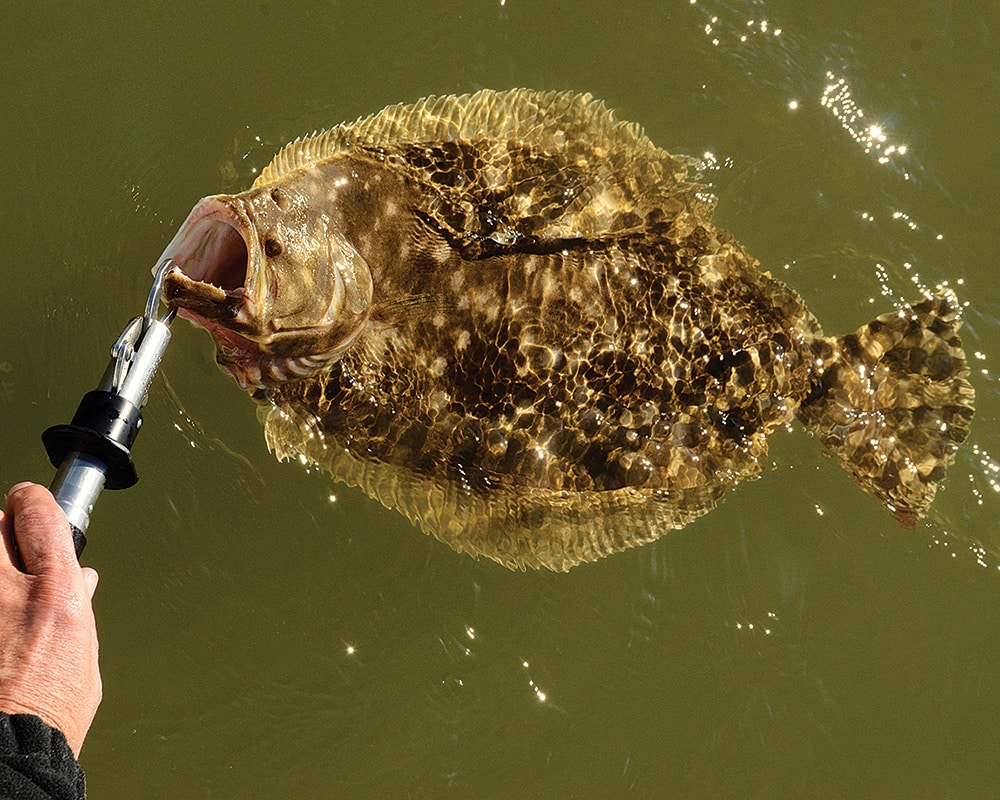
“With a gripper, you have full control of the fish, the hooks aren’t tangled in a net, and the fish’s slime coat isn’t compromised from the net’s mesh or from lying on the boat deck,” says Dan Quinn, field promotions manager at Rapala. “Plus, grippers are much easier to stow and take up less space.”
The main styles of lip grippers are traditional T-style grips, pistol grips and floating plastic grips. Numerous companies sell lip grippers, including Baker, Bass Pro Shops, Berkley Fishing, BogaGrip, Cuda, Mustad, Evolution Products, The Fish Grip, Rapala and others.
“Floaters are very popular with kayak and wade fishermen,” says Mitchell. “T-style and pistol grips tend to hold more weight and have more torsional rigidity when handling large or aggressive fish.”
Traditional Fish Grippers
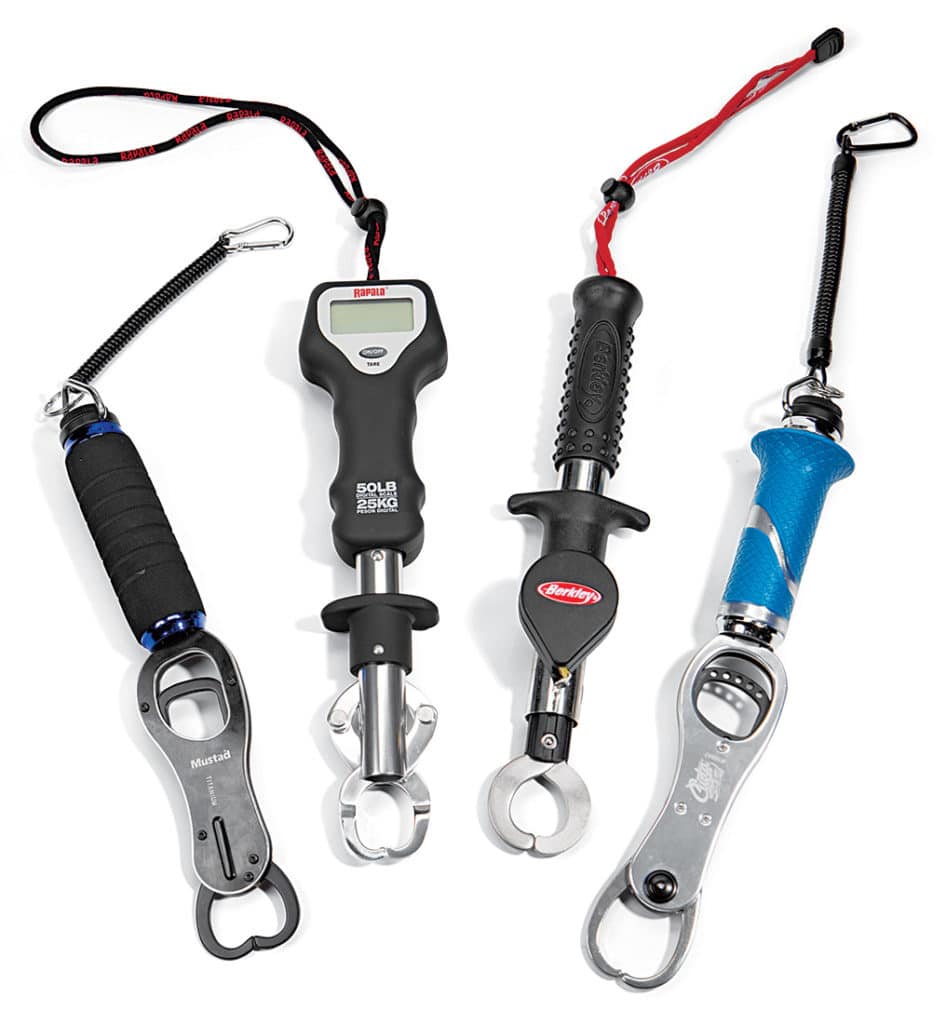
Traditional fish grippers are mostly made from aluminum or stainless steel, and designed with a pair of claw arms that clamp tightly around a fish lip. These grips feature a handle that fishermen can grab with a fist, or a handle shaped like a T. Most lip grippers come with a non-T-style handle but utilize a T-configuration or other mechanism to open the jaws.
All lip grippers handle a fish boatside. The angler can opt to leave fish in the water while avoiding sharp teeth or hooks. More-expensive grips feature a built-in scale to weigh fish.
“When used properly, grippers make handling average-size fish much easier,” says Stephen Britt, Berkley‘s senior product manager. “One angler can lift the fish from the water and keep control over the fish while another angler removes the hook quickly for release.”
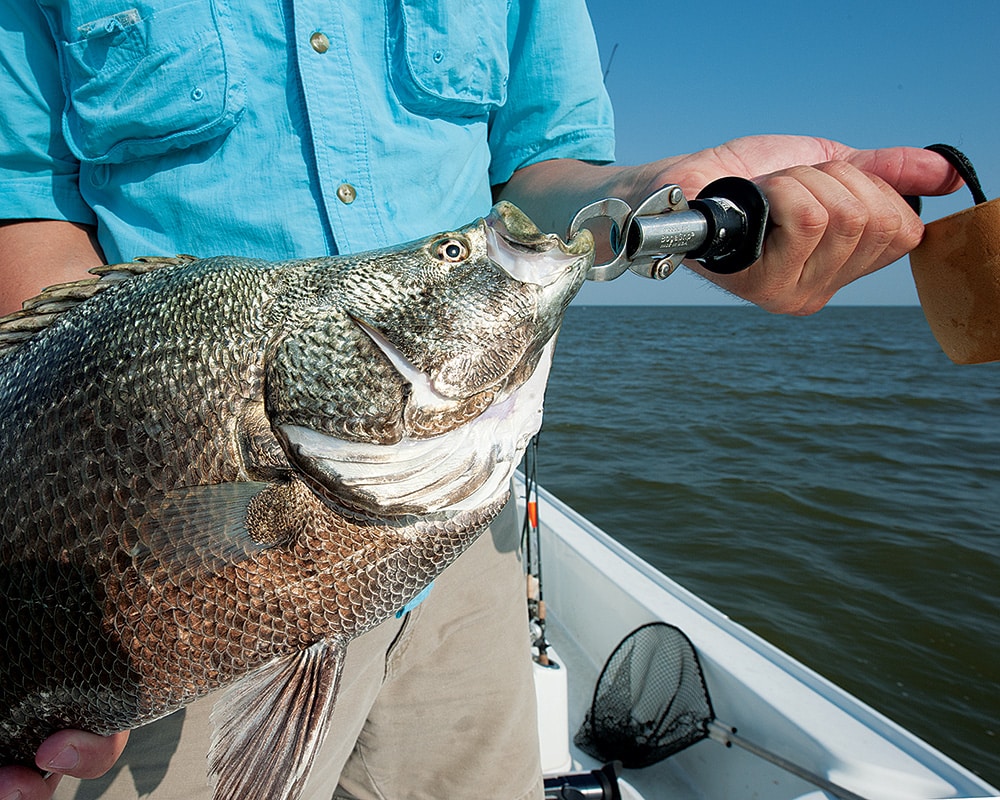
The best-recognized traditional gripper is likely the BogaGrip. A prime example of a true T-handle gripper is the Baker 7½-inch T-handle Grip ‘n’ Release. In between those two options, there are additional unique styles sold by different manufacturers.
“My business partner, Charles Camp, came up with the idea for the BogaGrip while looking at a toy that utilized a lazy-tong principle,” explains Gary Alldredge, of Eastaboga Tackle Manufacturing Company. “He then used his 30 years of fishing experience and skills as a machinist to incorporate this principle — along with an actuating and locking mechanism, a spring shock-absorber system and scale — into a tool for handling fish.”
Since then, the fishing industry has tried to improve on the original. Innovations are available in some of the new models on the market today. The Cuda Grip & Scale and Mustad Fish Gripping Tool both incorporate stainless-steel jaws and a 50-pound scale. Berkley’s Big Game Lip Grip features a built-in retractable tape measure. Rapala’s 50lb. Fish Gripper utilizes a digital scale.
“A big determining factor [in the quality of the scale on the gripper] is the cost of the spring,” says Val Osinski, of Evolution Products Inc. “Our entry-level Econo Scales feature a corrosion-resistant aluminum body and stainless jaws but have an entry-level spring. Our higher-end models have stainless construction and a better spring for increased accuracy.”
Pistol Grip Fish Grippers
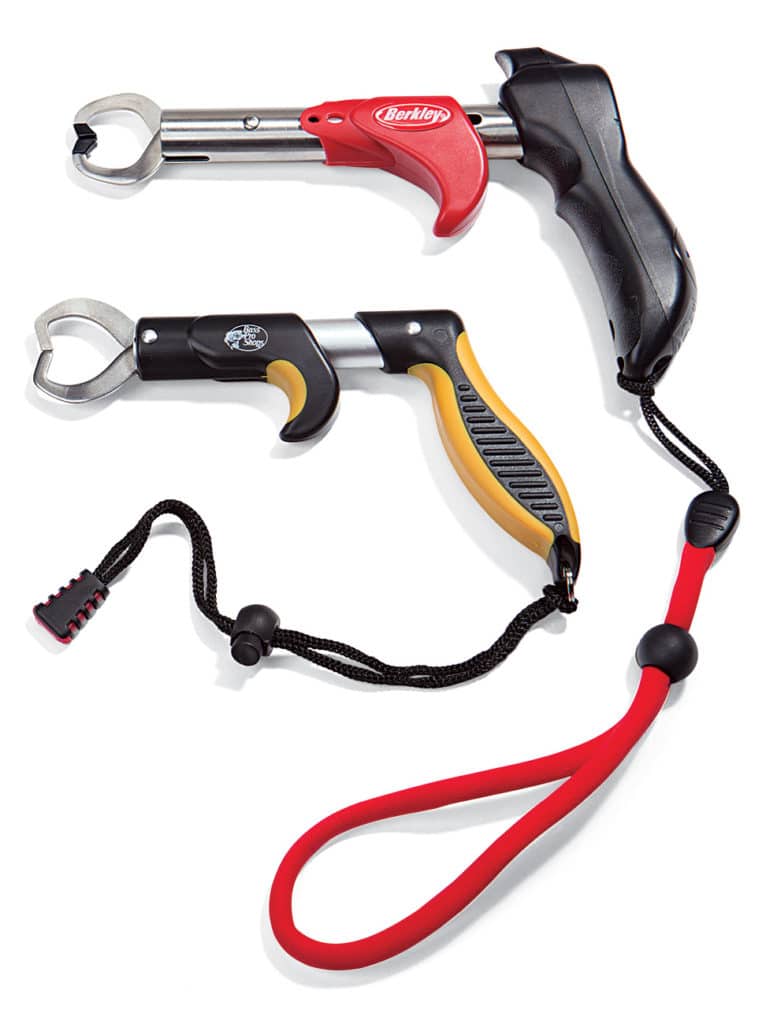
Shaped similarly to a handgun, pistol-style fish grippers feature a trigger that opens and closes a set of jaws at the muzzle. No bullets needed, just a comfortable grip, lanyard and stainless-steel jaws on models such as Berkley’s Pistol Lip Grip and Bass Pro Shops’ Pistol Fish Grip. Berkley’s version also features a 30-pound scale.
“Pistol models are designed based on hand ergonomics,” says Britt. “These shapes support the angler’s ability for best performance. Fish-grip ergonomics help maximize hand strength and reduce fatigue.”
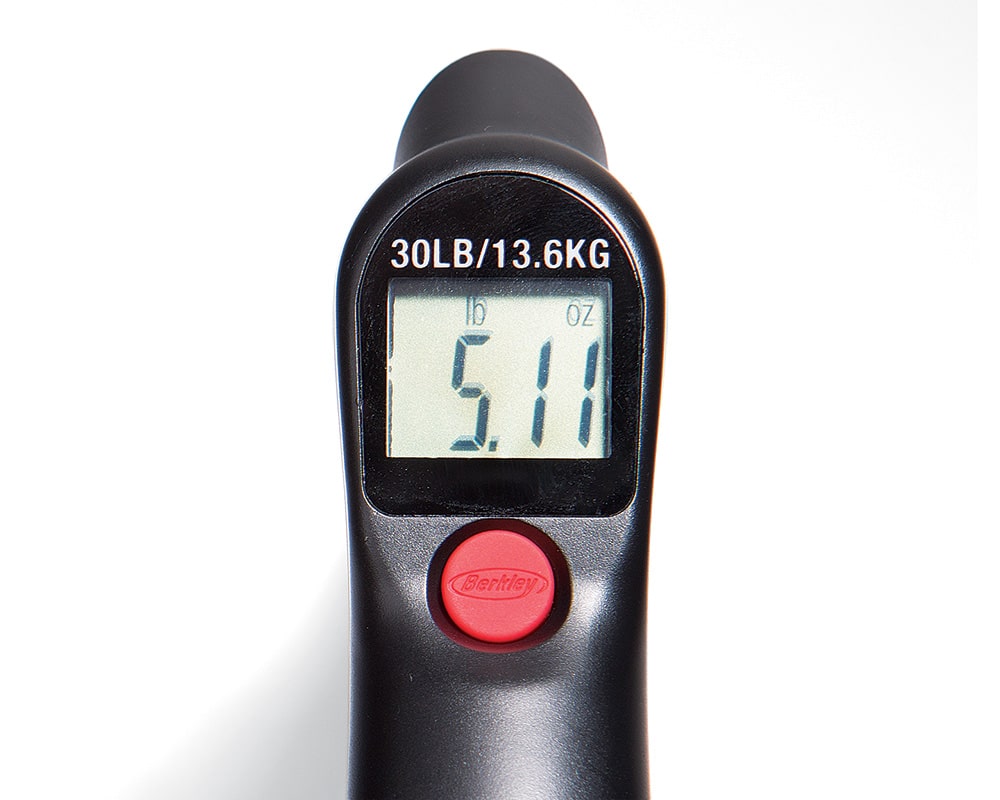
In general, pistol grips can’t handle larger fish because this style of models doesn’t always incorporate 360-degree motion of the jaws like most traditional grippers. (Of course, there are exceptions, such as Berkley’s Pistol Lip Grip.)
“Complete 360-degree rotation is for when a big fish goes wild at the boat so the jaws don’t torque but do keep a firm grip on the lip,” points out Capt. Rick Constantine, Cuda’s general manager.
Plastic Floating Fish Grippers
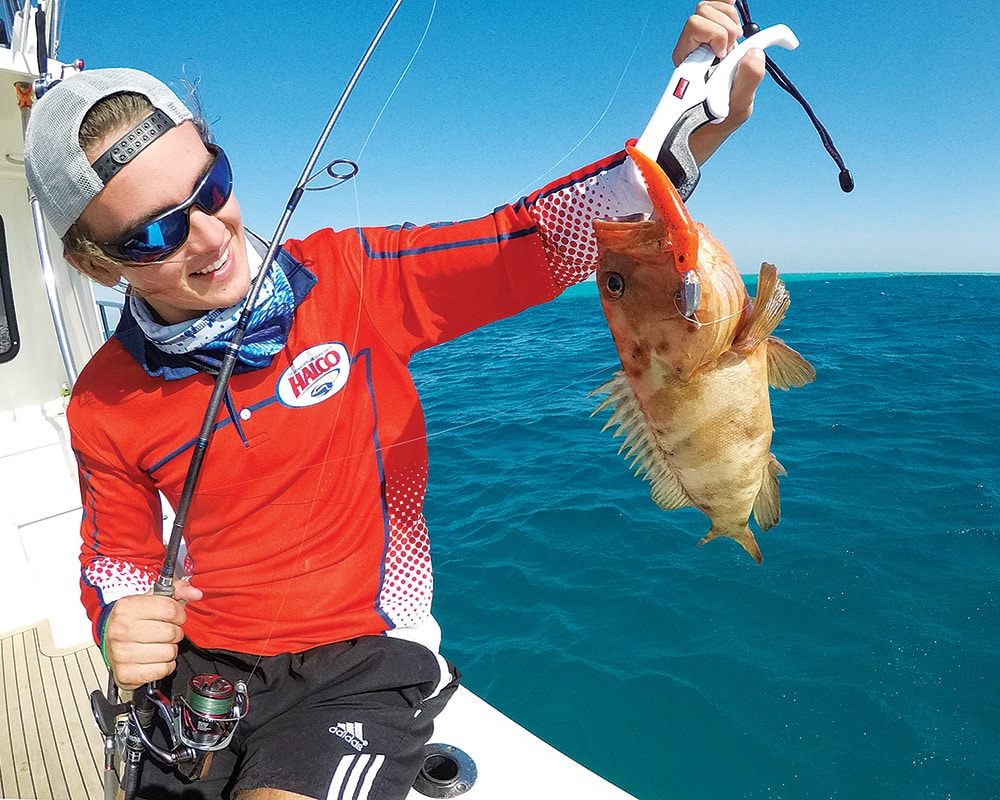
A final fish-handling-device option is a plastic, floating fish grip. Most metal grippers need a float attached to a lanyard to keep the tool from accidentally sinking to the seafloor. Plastic grips float, negating that potential drawback, but they lack some features of T-style, traditional or pistol grips.
The Fish Grip was the first plastic gripper tool to market, and it’s been a mainstay ever since.
“We like to think we started the plastic lip grippers,” says Brian McCarthy, business development manager for United Plastic Molders, parent company of The Fish Grip. “Some local tournaments were moving toward no-puncture devices only, and we needed something to hold redfish.”
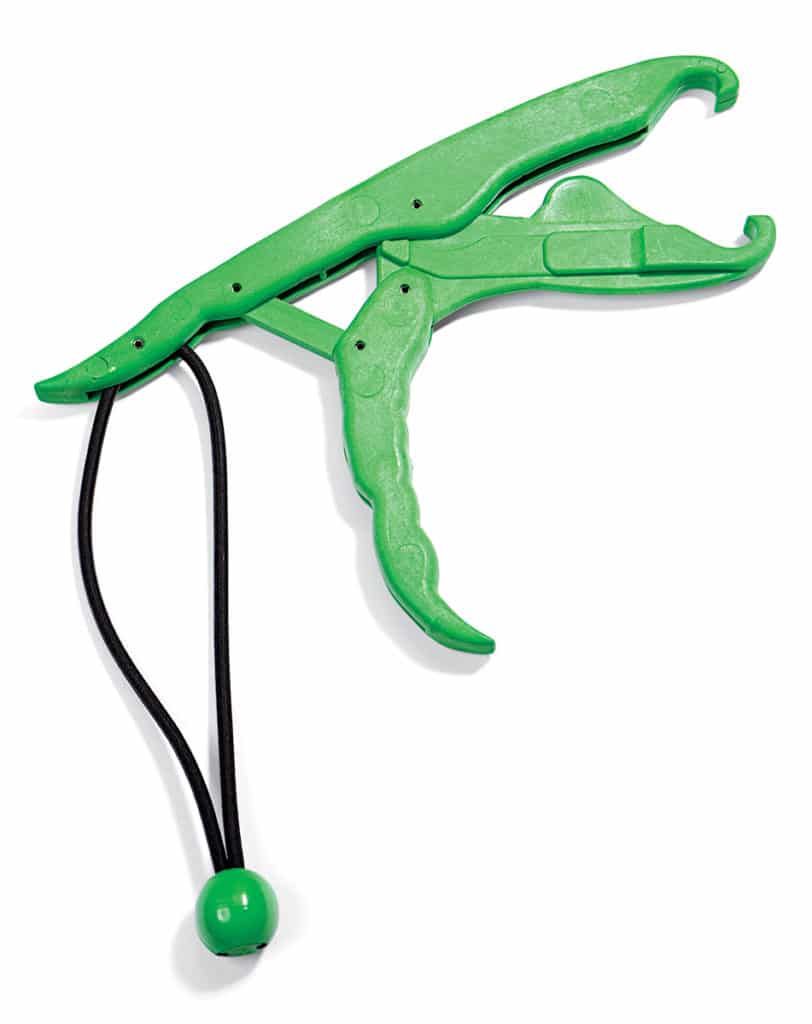
The Fish Grip is available in two models: The original Fish Grip handles 100 pounds, and the junior model holds 26 pounds. The company recently upgraded its material from a copolymer with polypropylene to a proprietary composite polymer made from cellulose wood fibers, says McCarthy.
Rapala and Bass Pro Shops have their own versions of floating fish grippers. The Rapala Floating Fish Gripper is available in 6- and 9-inch versions, with basic features such as a quick-release open-and-close mechanism.
“When you squeeze the grips, look at the jaws,” points out McCarthy. “Make sure the jaws don’t open no matter how hard you squeeze — it could be the difference between landing and losing a fish.”
Comparing Different Fish Grippers
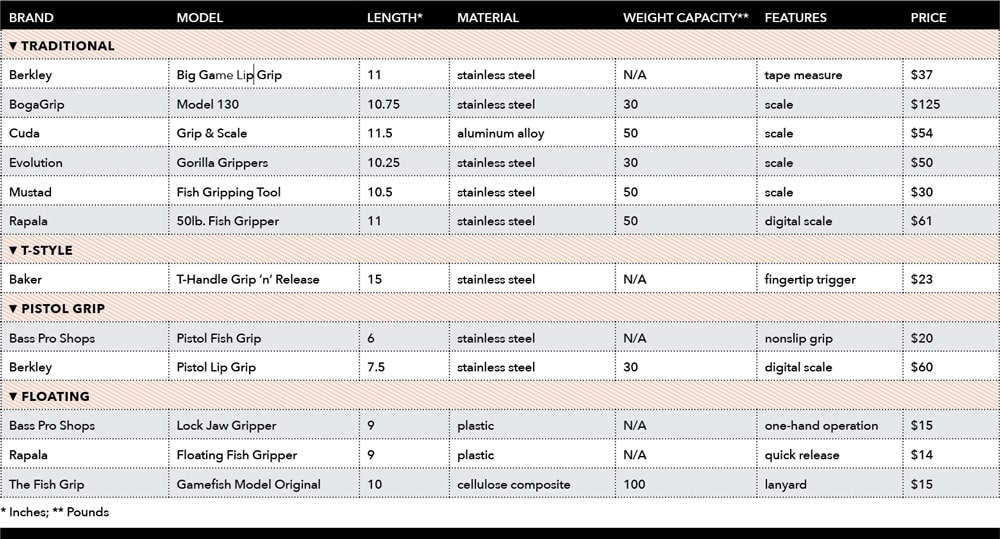
Handle With Care
Many of the lip-grip manufacturers interviewed independently stated that they believe their weight scales do not cause physical damage to fish or inhibit future feeding ability — when the fish is hung vertically. Anglers who want to weigh a fish before release can play it safe by weighing a knot-free net with the fish inside the net. For pictures with a lip gripper, fishermen can hold the fish horizontally with a hand underneath the belly to alleviate pressure on the fish’s lower jaw and to support the internal organs.

